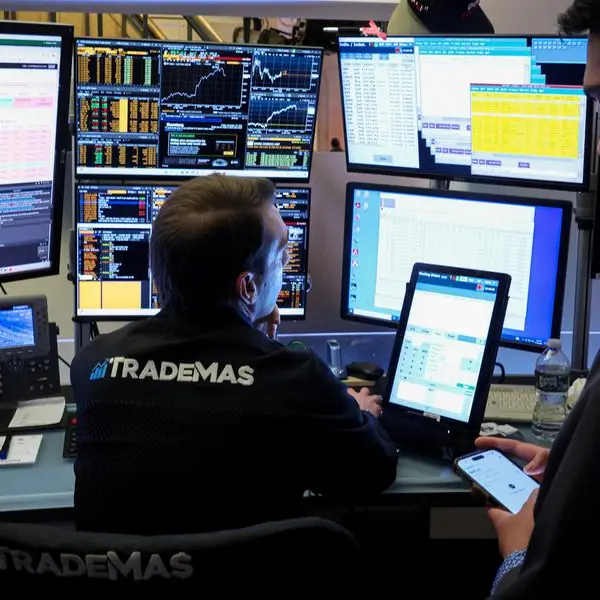PHOTO
The European Central Bank looks all but certain to cut rates again on Thursday, yet the outlook after that is less clear.
Dovish and hawkish policymakers are at odds over whether a weak growth outlook is enough to end inflation worries.
"This cut is relatively uncontroversial, so it's really more about the messaging," Soeren Radde, head of European economic research at hedge fund Point72, said.
Here are five questions for markets:
1/ What will the ECB do on Thursday?
Almost certainly cut its deposit rate by 25 basis points, with investor focus on hints of what happens next.
Since the ECB last met, traders have fully priced in another cut after September, most likely in December, and are betting there is a chance of an October cut.
In mid-July, they had seen less than a full chance of one post-September cut, so investors are keen to hear what, if anything, ECB chief Christine Lagarde says about a potential October move.
ECB policymakers have yet to endorse back-to-back cuts.
"Lagarde will not abandon the rhetorical stance that the ECB will be strongly data-dependent," Felix Feather, economist at asset manager abrdn, said.
2/ Can the ECB stop worrying about inflation?
More than at any point this cycle.
Inflation reached the closest to the ECB's 2% target since 2021 in August, at 2.2%. Wage growth is slowing.
The bloc's recovery has been sluggish and Germany's economy shrank in the second quarter, so doves are flagging the risk that cutting too slowly could even push inflation below target.
Yet the disinflation has come from energy and goods and has likely run much of its course, economists say.
The ECB expects inflation to tick up to 2.5% at year-end.
Core inflation remains just under 3% and services inflation above 4% has not dropped this year, so hawks want to see further easing to be sure inflation is under control.
"Inflation is proving to be quite persistent, the labour market is resilient and growth, it's disappointingly weak, but equally, it's not negative," Point72's Radde said.
So the ECB has little to lose by cutting rates at a gradual, quarterly pace, he added.
3/ What will new ECB projections show?
Growth was less than the ECB expected in the second quarter and underlying inflation sticky, so economists reckon the bank will revise down its growth and possibly revise up its core inflation projection slightly for this year.
That should not change the longer-term picture, where the ECB expects inflation back to 2% in late 2025, economists said.
4/ What are the implications of a stronger euro?
Marginal.
The euro rose to $1.12015 in late August, its highest in over a year, and reached a record high on a trade-weighted basis.
A stronger currency, in theory, bodes well for taming inflation, but it would take much sharper, longer-lasting moves to have a material impact, ECB research has shown.
5/ What will the ECB's revamped rates system mean?
Not much, for now.
The ECB announced a new framework in March, setting out how it will provide liquidity as it drains trillions of euros of cash from the financial system.
To support banks once cash needs rise, the ECB reduced the premium they have to pay to borrow at its weekly cash auctions relative to the interest the central bank pays on deposits to 15 bps from 50.
The change applies for the first time on Thursday, so a 25 bps deposit rate cut will mean a 60 bps cut to the Main Refinancing Operations rate.
The change aims to balance money market stability, ensuring banks are not penalised for borrowing from the ECB, with reviving interbank lending.
But currently, excess liquidity around 3 trillion euros compares to less than 2 billion euros borrowed at the ECB's last auction, so it will take years for the change to have an impact.
What may matter more is the details the ECB will eventually release on the longer-term loan and bond-buying operations it will launch once its balance sheet grows again.
"Until they do that, we never know exactly how the money market will be structured," said Pictet Wealth Management's head of macroeconomic research Frederik Ducrozet.
(Reporting by Yoruk Bahceli and Stefano Rebaudo; editing by Dhara Ranasinghe and Barbara Lewis)























